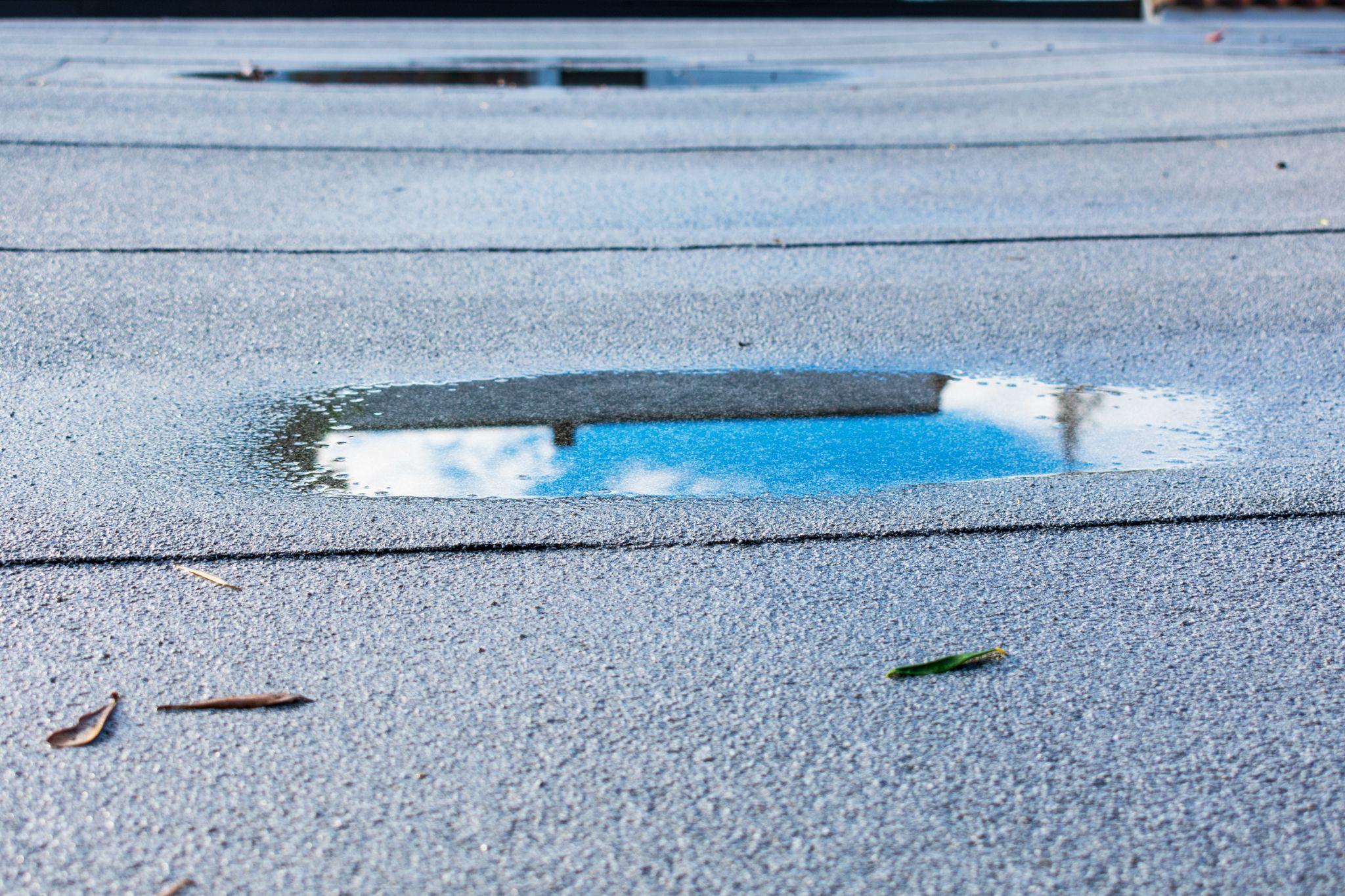
Your commercial property’s roof is a major investment, and its longevity is crucial for the long-term success of your business. However, taking care of your roof isn’t always easy, especially if your building is on the older side. One common issue that many property owners face is roof ponding. This phenomenon, characterized by water accumulation on a flat commercial roof, can lead to significant water damage if not addressed promptly. In this article, our commercial roofers in Claymont, DE, will explain how to prevent ponding water on flat roofs and safeguard the integrity of your roofing materials. Let’s get ready to roof!
Understanding the Dangers of Roof Ponding
Do puddles stick around on your roof for a little too long after the latest storm has passed? You might be dealing with a case of roof ponding. Ponding is more than just an aesthetic issue; it’s a threat to the structural integrity of your commercial roofing systems. Over time, stagnant water can degrade roofing materials, causing a roof leak that can seep into the interior of the building. Not only will this damage the roof membrane but also the underlying roof insulation, leading to costly repairs.
Moreover, the weight of standing water can strain the roof structure, potentially leading to collapse in severe cases. Stagnant water can also become a breeding ground for algae and insects, posing health risks to your building’s occupants. All in all, the consequences of ignoring roof ponding aren’t something you want to have to deal with!
Tip #1: Select the Right Materials
The best way to prevent roof damage is to make smart choices during the initial construction or re-roofing of your property. One critical aspect of preventing ponding water on your roof is the selection of suitable roofing materials. Some materials are more resistant to water damage and, in turn, are more resistant to standing water. For example, a roof membrane made of PVC or TPO is highly resistant to water and can effectively prevent leaks. These materials are also durable and can withstand harsh weather conditions, making them ideal for commercial roofing systems.
Tip #2: Implement a Slight Slope
A flat commercial roof isn’t actually completely flat. It should have a slight slope, typically between 1/4″ to 1/2″ per foot, to facilitate proper water runoff. However, over time, a roof can lose its slope due to factors like structural settling or sagging.
If your commercial building is experiencing ponding issues, it might be worth considering the addition of a slight slope to your roof. This can be achieved through a method called roof tapering. Roof tapering involves adding a thin layer of insulation in a sloped shape on top of the existing roof deck before installing the new roof membrane. The slope can be customized to direct water toward the building’s drainage points, significantly reducing the risk of ponding.
This solution might involve a higher upfront cost. Still, the long-term benefits of preventing standing water and extending the life of your roofing materials can make it a worthwhile investment. Remember, every building is unique, so it’s best to consult with a professional roofing contractor to determine the most effective strategies for preventing roof ponding on your property.
Tip #3: Ensure Proper Drainage
One of the key factors in preventing roof ponding for existing roofs is ensuring proper drainage. A well-designed roof drainage system can effectively channel water off the roof, reducing the risk of water accumulation. Roof drainage systems include internal drains, scuppers, and gutters. Internal drains are located at the center of the roof, collecting water and directing it away through concealed pipes. Scuppers are openings in the side of the roof that allow water to exit onto the ground or into downspouts. Gutters collect water at the roof edge and direct it away from the building via downspouts.
However, these systems can only function correctly if they are regularly cleaned and maintained. Debris such as leaves, dirt, and trash can clog these systems, causing water to back up and pool on the roof. So don’t forget to schedule regular commercial roofing maintenance with our commercial roofers in Claymont, DE!
Tip #4: Trust the Experts
Ultimately, the best way to prevent roof ponding is to engage a professional roofing contractor. A qualified contractor will install a proper drainage system, ensuring that your roofing materials suit your specific needs.
Skilled commercial roofers can also offer valuable advice on regular roof maintenance to prevent future ponding. This includes regular inspections to detect early signs of water accumulation and timely repairs to address any potential issues.
Keep an Eye on Those Puddles!
Roof ponding is a serious issue that can cause significant damage to your commercial property in the long term. However, by taking the right steps, you can effectively prevent water on your roof and safeguard your investment. Remember, preventative measures taken today can save costly repairs tomorrow, keeping your commercial building in optimal condition for years to come.
For commercial roofing advice, repair, replacement, and more, don’t hesitate to reach out to Lane Roofing today. We’re always here to provide you with high-quality commercial roofing services!

